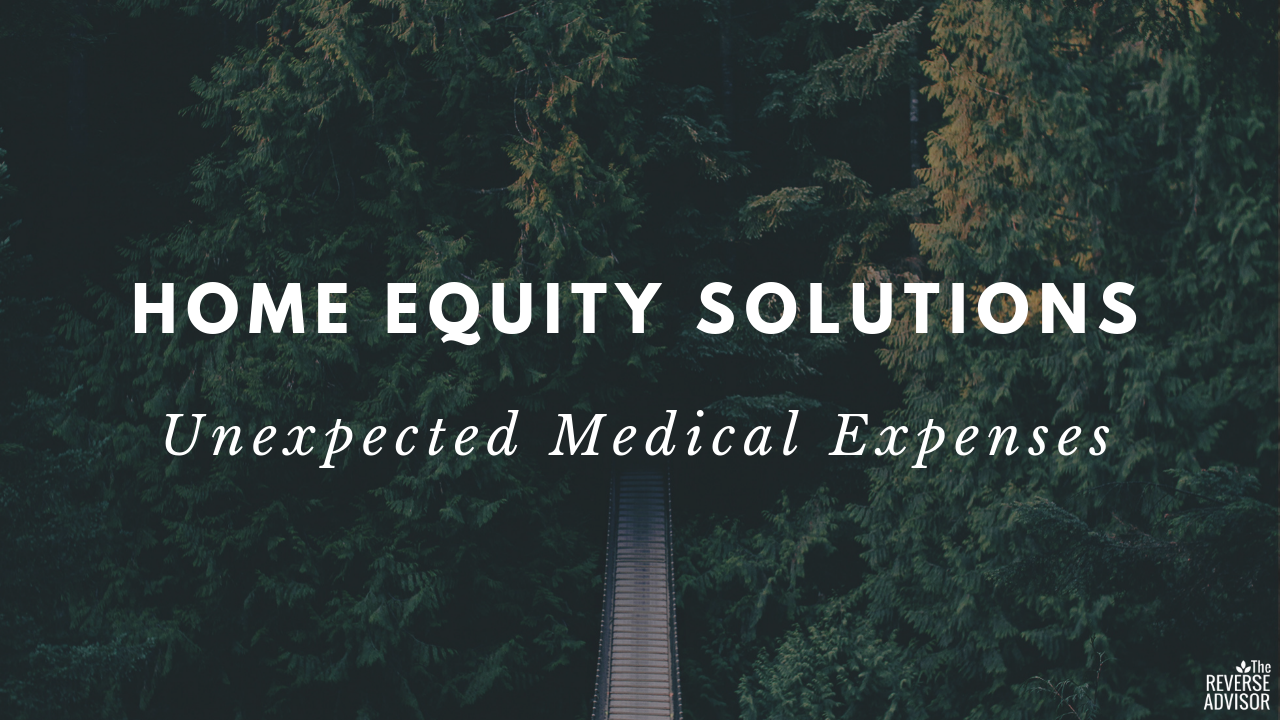FHA HECM Not for High Value Homes

In 2018, homeowners with houses worth over $800,000 got many new options allowing them to safely access some of their house-based wealth more efficiently than ever before.
It was also the year when changes to the popular FHA reverse mortgage made them even less useful for high value homes.
This is part one in a three-part series that explores the many innovations jumbo reverse mortgage lenders introduced in 2018. We begin with a quick history of the jumbo reverse program.
Then we spend a little time talking about why the timing couldn't be better for those with considerable equity; primarily because changes to the popular government-insured FHA HECM (home equity conversion mortgage or reverse mortgage) have made them more expensive and less useful for million dollar plus properties.
For many years the FHA reverse was the only choice. Now homeowners have many choices, which allows them to accomplish their objectives in a cost efficient manner. If you'd like to talk to us about your situation, click the Reverse Mortgage Qualifier button below and we will generate a report from our reverse mortgage calculator based on your unique situation.
Part One
- Why recent changes to the FHA program are negative for higher-value homes
Part Two - New Jumbo Reverse Mortgage Options
- Recap the benefits of jumbo reverse mortgages
- 2018 jumbo reverse improvements and innovations
- New product features
- Details and charts showing jumbo vs. FHA
- The 3 questions borrowers and financial planners should ask
Part Three - Jumbo Reverse Mortgage Examples
- Example 1: eliminating mortgage and funding unexpected medical expenses
- Example 2: $200,000 second mortgage - easy qualifying, no payment
Jumbo Reverse Mortgage History
Jumbo reverse mortgages are HECMs (home equity conversion mortgages) and are primarily for homeowners with considerable equity in homes value over $900,000 and/or those with non-FHA approved condos.
After the 2008 financial meltdown, the only jumbo reverse mortgage available was offered by Generation Mortgage, which rolled out their product in June of 2010. Four years later they closed down their reverse mortgage business.
That same year, 2014, Urban Financial introduced its own proprietary reverse mortgage under the name HomeSafe. Between October 2014 and March 2016, they only originated 154 loans in the U.S.
Based on our own experience, over the last many years, borrowers repeatedly told us they were dissatisfied with how much they could borrow with a jumbo reverse mortgage. They said it wasn’t enough to be interesting to them.
The summer of 2018 was when jumbo reverse mortgages became more interesting as multiple lenders introduced proprietary versions of the loan. Those innovations are likely predicated on better acceptance of the product on Wall Street, as evidenced by a recent $571 million AAA-rated security offering – the first since 2007.
Competition among big wholesale lenders to offer new features or better rates is really helping homeowners and financial planners who help seniors overcome the struggle of not having enough liquidity (cash) or monthly income. These homeowners often say things like,
“I’m rich on paper but I don’t have money to do the things I want or need to do.”
We'll start with an explanation of how recent changes to the government-insured FHA program have further constrained them as a tool for high-value homes.
FHA HECM Program Changes & Curtailment
The United States Department of Housing and Urban Development (HUD) oversees FHA (Federal Housing Administration) and regulates the HECM program. The government-insured reverse mortgage loan was established in 1988 when Ronald Reagan signed the reverse mortgage bill into law.
In the last 30 years, there have been hundreds of changes to the program, all of which were designed to make the program safer for seniors and/or tax payers.
Some of the most restrictive changes have occurred in the past three years as losses connected to the great recession have adversely impacted the government mutual mortgage insurance fund.
Big changes occurred in October 2017 affecting mortgage insurance and maximum loan amounts. These changes in particular have made the FHA version more expensive and less attractive for higher value homes.
FHA Mortgage Insurance
There are two types of FHA mortgage insurance: 1) an upfront premium collected at closing, which is based on the value of the home, and 2) an annual premium or amount that is applied to the outstanding loan balance.
The upfront charge shows up on the Settlement Statement as a closing cost. The annual premium shows up each month on the lender statement.
Before October 2017, if a borrower took less than 60% of the maximum loan amount at closing, the upfront insurance was 0.5% of the house value. If they took more than 60% of the maximum loan amount (also called Principal Limit), the upfront mortgage insurance was 2.5% of the house value.*
Now all loans are charged an upfront mortgage insurance premium of 2% of the house value. House value is also known as the Maximum Claim Amount and it’s defined as the lesser of the government-defined national lending limit, or the appraised value, or the purchase price.
This change greatly affects those who want to set up a line of credit but don’t need any money now. For example, on a $675,000 house the upfront insurance used to be ($675,000 x 0.5%) = $3,375. Now it is (675,000 x 2.0%) = $13,500. That’s a closing cost increase of $10,125.
On the flip side, the annual, or ongoing mortgage insurance premium was dropped from 1.25% to 0.5% of the loan balance. You can think of this charge as an increase in the rate. If the actual rate (index plus margin) was 5%, the effective rate would have been (5 + 1.25) = 6.25%, but now is (5 + 0.5) = 5.5%. This change is sort of like dropping the interest rate by 3/4%.
These changes were not an accident on the government’s part. Zero-draw lines of credit are unpredictable and thus hard to predict costs to insure.
As a taxpayer, I want the government to manage financial risks that I might be asked to someday cover. The challenge the government has is they don’t know if their tweaks are too little or too much until years later – kind of like driving by looking in the rear view mirror.
Reduced FHA Loan Amounts
Arguably, the biggest change on October 2nd, 2017 was reduced loan amounts; often referred to as principal limits. Below you can see the difference in borrowing percentage of the maximum claim amount (like appraised value) based on a 5% interest rate.
Before
- Age 62 – could borrow 52%
- Age 76 – could borrow 62%
Now
- Age 62 – can borrow 41%
- Age 76 – can borrow 50%
The 2017 principal limit reduction dropped loan amounts by roughly 11%. For example, at age 62, on a 680,000 house; a borrower used to be to get $353,000 versus $278,000 now. That is $75,000 less.
You can see that if someone owes $300,000 on their existing mortgage, the reverse mortgage loan amount wouldn't be enough to pay off their first mortgage. They'd be short ($278,000 - $300,000) = -$22,000.
If they didn't have that much money in another account, that they could afford to use, a reverse mortgage would not be an option. We have these phone calls too often - it's really sad.
This change has greatly curtailed FHA reverse mortgage volume and has increased interest in jumbo reverse mortgages, which are not controlled by the federal government.
Second Appraisal Requirement
The last big FHA change to talk about is the October 2018 HUD rule where they have to review all FHA appraisals. If the government's computer models don’t agree with the appraised value, the borrower has to pay for a second appraisal and the lower value of the two appraisals must be used. That just happened to us last week on a manufactured home.
All of HUD's changes are designed to mitigate risks FHA HECMs pose to the MMIF (Mutual Mortgage Insurance Fund). Last fiscal year, the HECM portfolio had a negative economic worth of $13.6 billion. As a taxpayer, I like risk mitigation.
As a longevity specialist, helping people fund a better lifestyle in their later years, I’m grateful for all the jumbo reverse mortgage innovations which more than offset what we’ve lost with the FHA option. I feel sorry for people with homes worth less than $700,000 - these changes have been hard on them.
Click here to go to part two of our series we're you'll learn about the exciting innovations that occurred in 2018 positively affecting home owners with considerable equity.
Do you or someone you know need guidance? Click the Free Reverse Mortgage Qualifier button below for help understanding options and for us to calculate, in dollars, the short- and long-term benefit of one choice versus another.
Resources | References:
- A post-crisis first: Performing jumbo reverse mortgage bonds, Allison Bisbey, 11/1/18, Asset Securitization Report - https://asreport.americanbanker.com/news/a-post-crisis-1st-performing-jumbo-reverse-mortgage-bonds
- Mortgagee Letter 2018-06, 9/28/18, U.S. Department of Housing and Urban Development - https://www.hud.gov/sites/dfiles/OCHCO/documents/2018-06hsgl.pdf
* Always review important financial decisions with your own legal and tax professionals.
About the Author
 Kent Kopen earned his Reverse Mortgage Specialist credential in March 2007. Last year Kent earned the CRMP (Certified Reverse Mortgage Professional) designation. There are less than 170 CRMP designees in the United States. Mr. Kopen also provides education, tools, and strategies to professionals who offer financial and legal advice to others. "Our resources help financial advisors, CPAs, and estate planning attorneys help seniors optimize their home equity to provide greater security and peace of mind."
Kent Kopen earned his Reverse Mortgage Specialist credential in March 2007. Last year Kent earned the CRMP (Certified Reverse Mortgage Professional) designation. There are less than 170 CRMP designees in the United States. Mr. Kopen also provides education, tools, and strategies to professionals who offer financial and legal advice to others. "Our resources help financial advisors, CPAs, and estate planning attorneys help seniors optimize their home equity to provide greater security and peace of mind."



